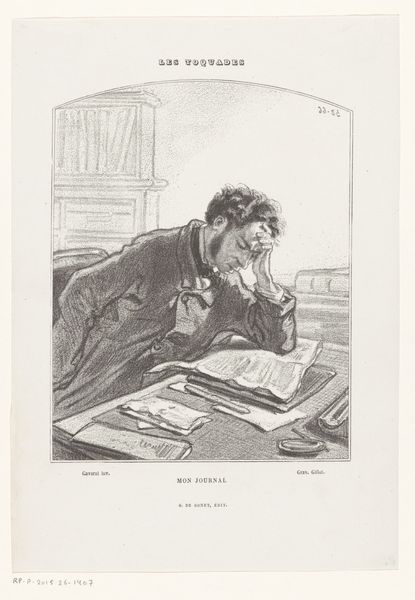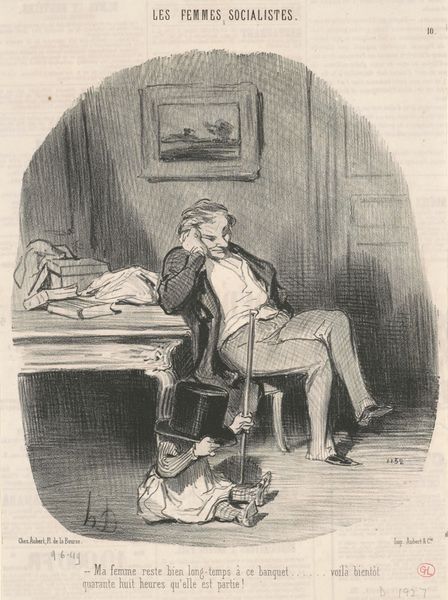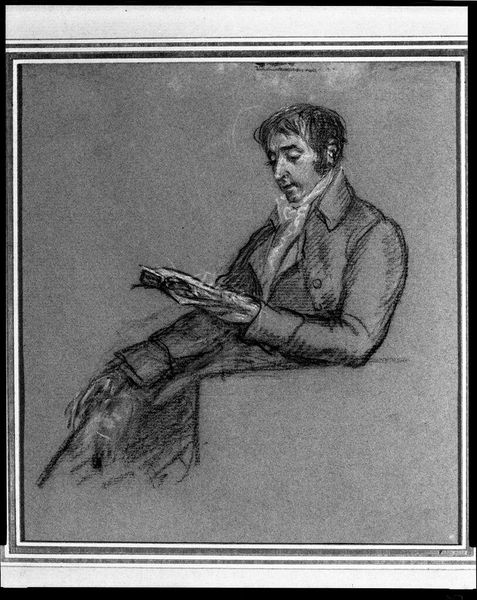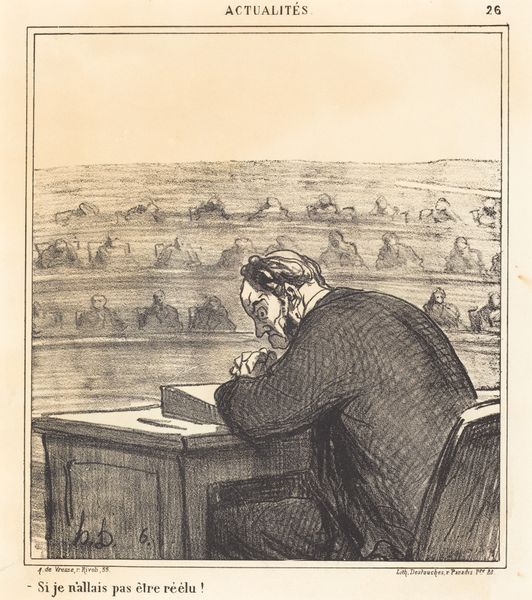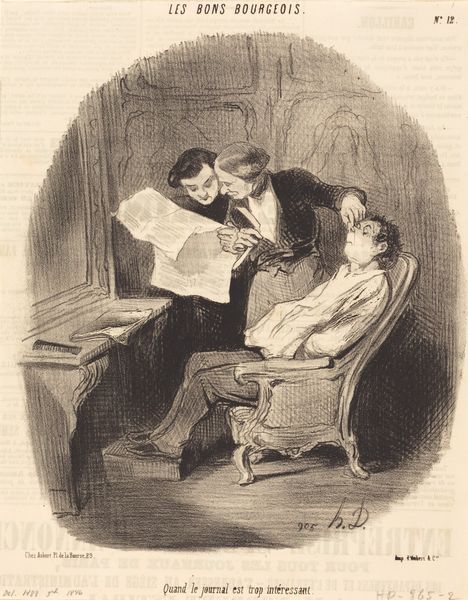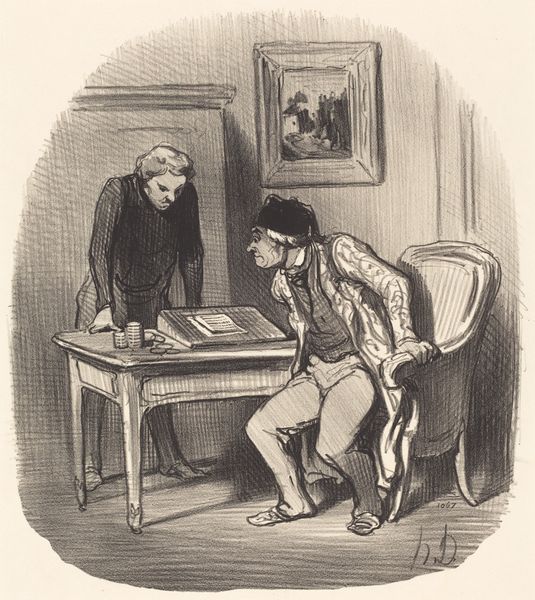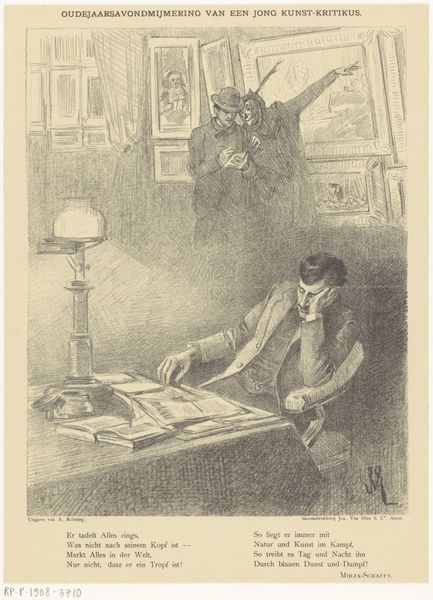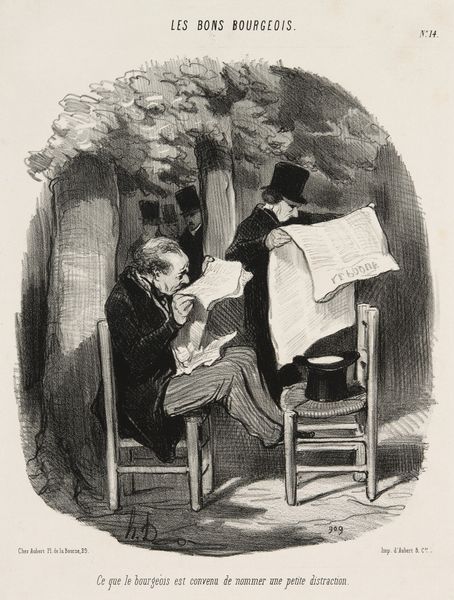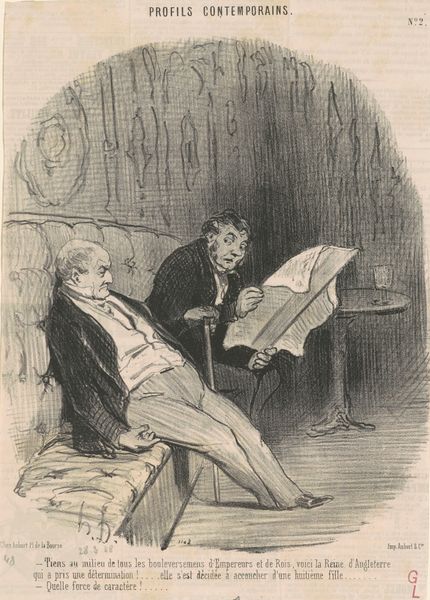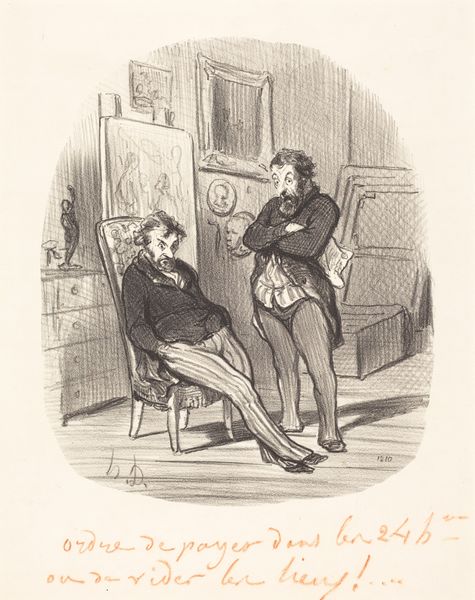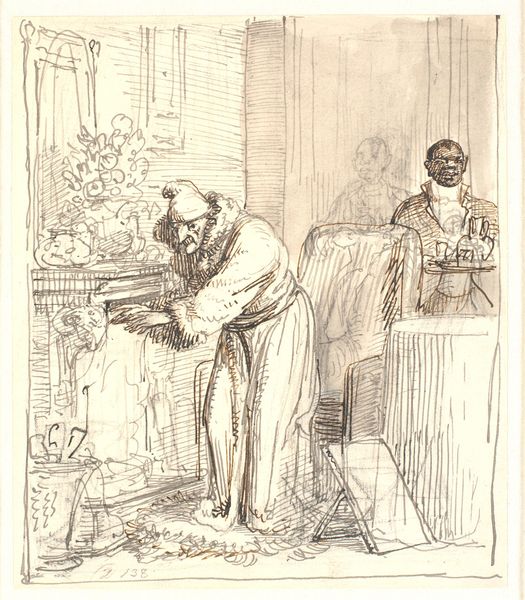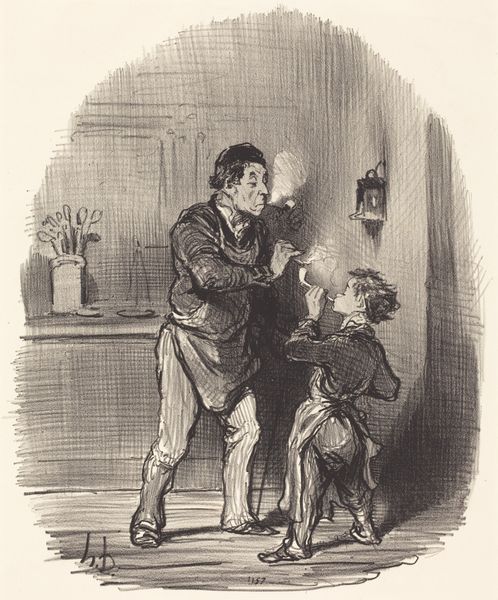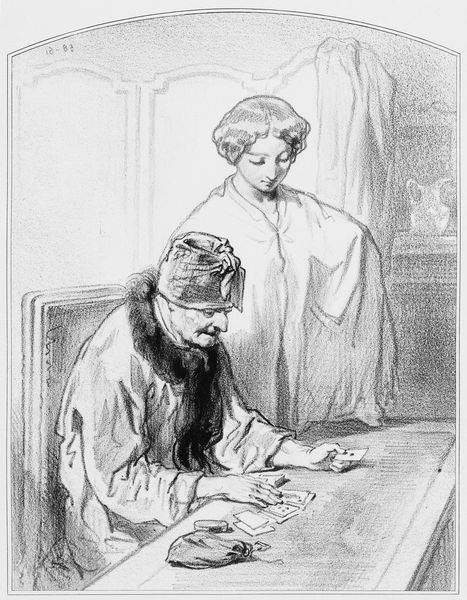
Dimensions: 17 11/16 x 12 7/16 in. (44.93 x 31.59 cm) (sheet)
Copyright: Public Domain
Curator: Welcome. We are looking at Paul Gavarni's "Mon journal," created around 1858. It's a lithograph, employing graphite and pen, offering an intimate glimpse into a moment of personal reflection. Editor: My first thought? The sheer exhaustion etched onto the subject's face is palpable. The monochrome palette amplifies the somber mood, really driving home a sense of weariness and perhaps, overwhelm. Curator: Absolutely. Gavarni's work often provided social commentary, frequently exploring the lives of ordinary people. This piece can be interpreted through a lens of class and labor. He offers commentary on the life and toil of the mid-19th century writer or intellectual. We see this through his romantic style, showing the cost of a life dedicated to artistry. Editor: Focusing on materiality, notice the distinct texture Gavarni achieves with lithography. The cross-hatching and delicate lines—the means of production become intrinsic to its meaning. How were prints made? Who consumed them and why? This opens interesting conversations about mass culture at the time. Curator: Certainly. The 'print' medium itself broadens accessibility of this moment to viewers. The composition positions the viewer as an observer of private life and invites the questioning of societal structures concerning art, work and even mental health through its sensitive style. The artist blurs the boundaries of public/private, challenging us to question labor hierarchies. Editor: His slumped posture isn't merely a visual element; it signifies a lived experience, possibly hinting at exploitation and exhaustion under capitalism that certainly affects marginalized genders as well. Considering what that time period would mean in terms of expectations surrounding men's labor and personal limitations, his exhaustion says so much! Curator: Indeed, the weight of expectation, both societal and personal, presses down. By rendering such intimate vulnerabilities in a traditionally public medium like prints, Gavarni questions the expected boundaries of privacy. These subtle narratives become opportunities to rethink dominant structures. Editor: So, thinking about both form and content—Gavarni uses modest means to evoke complex narratives regarding class, labor and lived experience. He encourages the examination of social and cultural hierarchies by looking into someone's workplace. Curator: Precisely. "Mon journal" invites us to consider intersections of art, identity, and the profound implications of daily life. It reminds us how artworks such as prints, especially in terms of form and function, continue speaking across generations, inviting empathy while stirring critical inquiry of present social order. Editor: It reminds us, once again, that paying close attention to materials can truly deepen and enrich the impact of art and understanding.
Comments
No comments
Be the first to comment and join the conversation on the ultimate creative platform.
